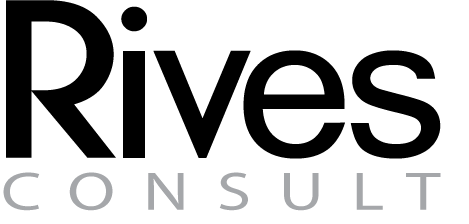Driving Innovation Through Customer-Centric Product Development
- Rives

- Jul 31
- 4 min read
Innovation is the lifeblood of successful businesses. In today’s fast-paced market, companies that prioritize their customers’ needs and preferences are the ones that thrive. Developing products with a user-focused approach ensures that innovations are not only creative but also relevant and valuable. This blog post explores how businesses can drive innovation by adopting user-focused product strategies, offering practical insights and actionable recommendations.
The Importance of User-Focused Product Strategies
User-focused product strategies place the customer at the center of the development process. This approach helps companies understand what users truly want, leading to products that solve real problems and enhance user satisfaction. By focusing on the user, businesses can reduce the risk of product failure and increase market acceptance.
For example, a software company might conduct extensive user interviews and usability tests before launching a new app feature. This feedback loop allows the company to refine the feature based on actual user needs rather than assumptions. The result is a product that resonates with its audience and stands out in a crowded market.
Key benefits of user-focused product strategies include:
Improved product-market fit
Higher customer retention rates
Enhanced brand loyalty
Increased innovation through real user insights

How to Implement User-Focused Product Strategies Effectively
Implementing user-focused product strategies requires a structured approach. Here are some practical steps businesses can take:
Conduct Customer Discovery: Engage with potential users early to understand their pain points, preferences, and behaviors. This can be done through surveys, interviews, and observation.
Create User Personas: Develop detailed profiles representing different segments of your target audience. These personas help keep the team aligned on who they are designing for.
Map the Customer Journey: Identify every touchpoint a user has with your product or service. This helps uncover opportunities for improvement and innovation.
Iterate Based on Feedback: Use agile development cycles to test prototypes and gather user feedback continuously. This iterative process ensures the product evolves in line with user expectations.
Collaborate Across Teams: Encourage cross-functional collaboration between marketing, design, engineering, and customer support to ensure a holistic understanding of user needs.
By following these steps, companies can create products that are not only innovative but also deeply aligned with user demands.

What is customer-centric new product development?
Customer-centric new product development is a methodology that prioritizes the customer's needs and experiences throughout the product creation process. Unlike traditional product development, which often focuses on technical features or internal goals, this approach ensures that every decision is guided by customer insights.
This process typically involves:
Early and continuous customer involvement: Engaging users from ideation to launch.
Empathy-driven design: Understanding the emotional and functional needs of customers.
Rapid prototyping and testing: Quickly building and refining product versions based on user feedback.
Cross-functional teamwork: Integrating perspectives from various departments to create a well-rounded product.
For instance, a consumer electronics company might develop a new smart home device by first observing how customers interact with existing products, then designing prototypes that address unmet needs, and finally refining the product through multiple rounds of user testing.
This approach not only increases the likelihood of product success but also fosters innovation by uncovering unique user insights that competitors may overlook.

Leveraging customer-centric product development to Drive Innovation
Integrating customer-centric product development into your innovation strategy can transform how your business creates value. This approach encourages companies to:
Identify unmet needs: By listening closely to customers, businesses can discover gaps in the market.
Reduce development risks: Early validation with users helps avoid costly mistakes.
Accelerate time to market: Agile feedback loops streamline the development process.
Enhance product differentiation: Unique insights lead to features that stand out.
To leverage this approach effectively, companies should invest in tools and processes that facilitate customer engagement, such as customer relationship management (CRM) systems, user analytics platforms, and collaborative design software.
Moreover, fostering a company culture that values customer feedback and continuous learning is essential. Leaders should encourage teams to embrace experimentation and view failures as learning opportunities.
Practical Tips for Sustaining User-Focused Innovation
Sustaining innovation through user-focused product strategies requires ongoing commitment. Here are some actionable tips:
Build a customer feedback ecosystem: Use multiple channels like social media, support tickets, and user forums to gather diverse insights.
Train teams in empathy and design thinking: Equip employees with skills to understand and solve customer problems creatively.
Set measurable goals: Define KPIs related to customer satisfaction, adoption rates, and product usability.
Celebrate customer success stories: Share examples of how your products have positively impacted users to motivate teams.
Stay adaptable: Market trends and customer preferences evolve, so remain flexible and ready to pivot when necessary.
By embedding these practices into your product development lifecycle, your business can maintain a competitive edge and continuously deliver value to customers.
Driving innovation through user-focused product strategies is not just a trend but a necessity in today’s market. By centering development around real user needs, companies can create products that are both innovative and impactful. Embracing this approach leads to stronger customer relationships, reduced risks, and sustained business growth.



